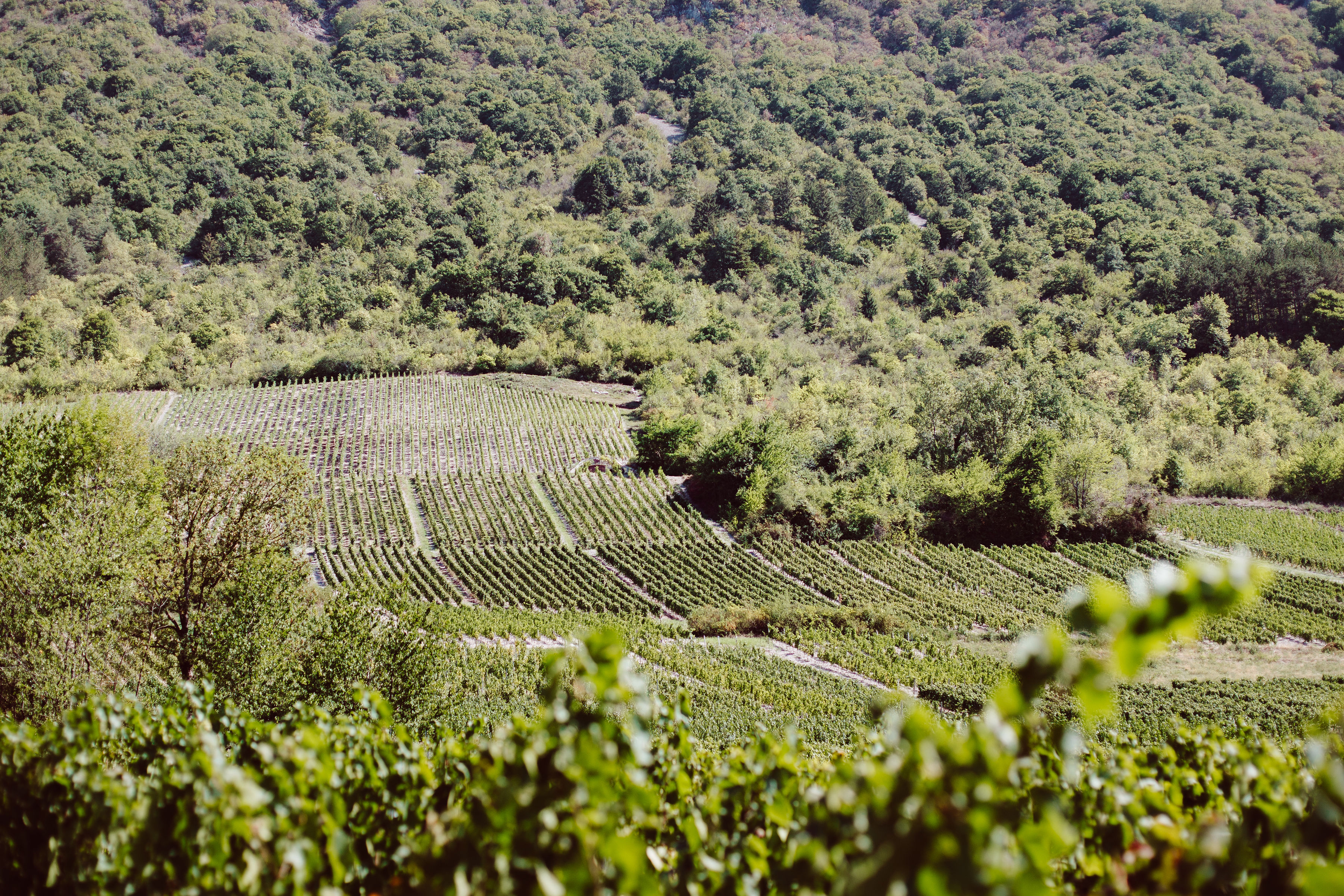Corbières PDO
In terms of volume of production, the Corbières AOC is the number one in the Languedoc. With more than 10,000 hectares and 400,000 hl/year, this appellation is indeed a powerful figurehead of the Languedoc vineyards. Between Carcassonne and Narbonne, from the Aude to the Pyrénées-Orientales, the terroirs multiply and the wines diversify. In red, but also in rosé and in white, the Corbières are always wines of character... with a very good quality-price ratio.
General presentation of the appellation Corbières
To the south of the Aude river, between the AOC Fitou and Minervois, the vast Corbières appellation spreads its vineyards across extremely contrasting landscapes. From the Mediterranean coast to the high, arid and stony Corbières, via the Lézignan plain, the AOC claims no less than 11 terroirs, all characterised by their own soils and climate. One of them, particularly renowned, is now distinguished by a separate AOC: Corbières-Boutenac. Other terroirs deserve to be mentioned, such as Durban, often considered the best, Fontfroide, Montagne d'Alaric, Quéribus, Sigean...
Corbières AOC wines are available in all three colours. The reds are in the majority: they represent 88% of the production, against 9% for the rosés and only 3% for the whites. The grape varieties are numerous and the proportions of grape varieties are complex. For reds, Carignan is the favourite grape variety, the one that gives the wines their typical character. It must be blended with at least one of the following grape varieties: Grenache noir, Mourvèdre, Syrah, or even Lledoner pelut. Other accessory grape varieties are authorised, such as Cinsault.
The rosés are also the result of a blend of at least two main grape varieties: carignan, cinsault, grenache, lledoner pelut, mourvèdre, picpoul noir and syrah. The same goes for the whites, whose main grape varieties are white Grenache, Macabeu, Marsanne, Roussanne and Vermentino.
Characteristics of Corbières
The Corbières AOC wines offer a great richness of colour and aroma. Powerful, tannic, fleshy and solid, the reds are a deep garnet colour with purple highlights. Their complex aromatic palette is marked by fruits such as blackcurrant and blackberry as well as spices, liquorice and the scents of the garrigue made of thyme and rosemary. The red Corbières wines age for 2 to 5 years, and for the best of them for more than 10 years.
The rosé wines of the Corbières AOC, with their salmon pink colour, are fresh and greedy. Their aromas are reminiscent of red fruits and are enhanced by a light floral touch and spicy notes. These are wines to be drunk young.
The white Corbières have an attractive, clear, bright pale yellow colour. Lively and aromatic, these wines are dominated by white fruits, exotic fruits and citrus fruits. White flowers further enrich this intensely fruity palette. They can be kept for 1 to 3 years.
How to enjoy a Corbières
A red Corbières is a perfect accompaniment to grilled meats and stews. It is generally drunk at a temperature of about 16°.
A rosé Corbières is ideal with cold meats, pizza, barbecues, etc. It should be served at a temperature of 8°.
Finally, a white Corbières goes well with seafood, fish, poultry and fresh goat cheese. It is usually served at a temperature of 10°.
Laissez-vous tenter... par les autres appellations !
Le vignoble

